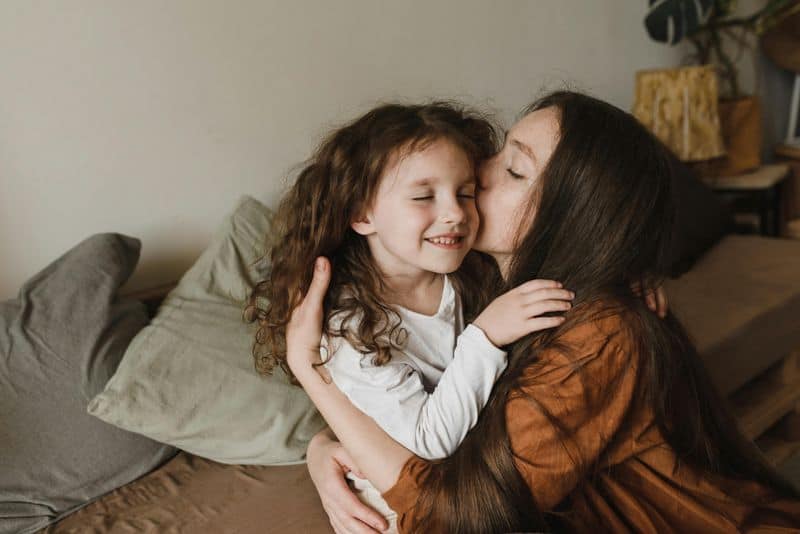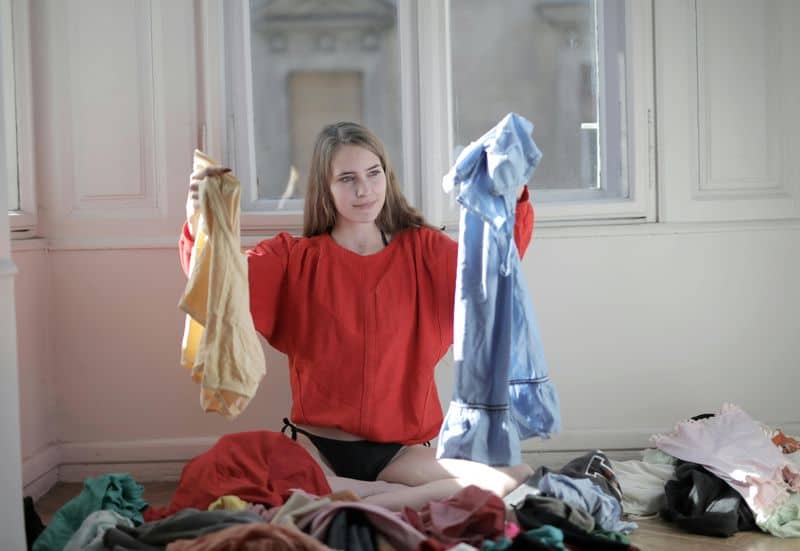Ever noticed how the oldest girl in a family often seems to carry the weight of the world on her shoulders?
That’s what we call ‘Eldest Daughter Syndrome’ – an unofficial term for the unique pressures firstborn girls face.
Growing up as the family’s first female child shapes how these daughters view themselves and their responsibilities.
Understanding these patterns can help both eldest daughters and their families create healthier relationships.
1. The Second Parent Phenomenon
Many eldest daughters find themselves acting as mini-moms from a surprisingly young age. They’re handed babies to hold, tasked with watching siblings, or expected to help with household duties before they’ve even mastered their own basic life skills.
This early caregiving creates a pattern that often follows them into adulthood. When everyone in the family automatically turns to them during crises, it reinforces their role as the family’s emotional backbone.
The habit becomes so ingrained that many eldest daughters don’t even recognize it as unusual until they compare notes with friends who grew up in different family positions.
2. Perfectionism On Overdrive
The standards eldest daughters set for themselves often reach impossibly high levels. They’ve internalized the message that mistakes aren’t an option when others are watching and learning from their example.
Report cards must show straight As. Rooms must be spotless. Behavior must be beyond reproach. This perfectionism typically extends beyond childhood into career choices, parenting styles, and even simple daily tasks like organizing a pantry or planning events.
The mental toll adds up silently, with many eldest daughters experiencing anxiety attacks or insomnia while their external appearance remains completely put-together.
3. Boundary Struggles
“No” feels like a forbidden word in the eldest daughter’s vocabulary. When family members need help moving, advice on relationships, or emotional support at 2 AM, they call the eldest daughter – and she answers.
Years of prioritizing others’ needs creates a pattern where setting healthy limits feels impossible or selfish. The eldest daughter might experience physical symptoms like headaches or exhaustion before recognizing these as signals that her boundaries have been crossed.
Friends and partners often notice this pattern long before the eldest daughter acknowledges how rarely she puts herself first.
4. The Control Center
Vacation planning? The eldest daughter has spreadsheets ready. Family gathering? She’s already coordinating who brings what dish. This need for control stems from early responsibilities that taught her nobody else will handle things properly.
Delegating tasks becomes nearly impossible because past experiences have reinforced that she’ll ultimately fix others’ mistakes anyway. The mental load becomes exhausting, yet asking for help feels riskier than just doing everything herself.
Watch how she instinctively takes charge in group settings, organizes others, or feels physically uncomfortable when things aren’t going according to plan.
5. Emotional Caretaking Radar
Her emotional antenna constantly scans the room, picking up subtle shifts in mood others miss completely. The eldest daughter often knows her mother is upset before Mom herself realizes it.
This hyperawareness developed as a survival skill, helping her anticipate family needs and prevent conflicts. She instinctively smooths ruffled feathers, offers the right comforting words, and absorbs others’ emotional burdens without being asked.
The downside? Her own emotional needs frequently go unaddressed while she’s busy managing everyone else’s feelings, creating a one-sided dynamic that follows her into adult relationships.
6. Achievement As Identity
Gold stars, trophies, and accolades aren’t just nice bonuses – they’re validation that she’s fulfilling her role correctly. The eldest daughter often builds her entire identity around what she accomplishes rather than who she inherently is.
Career setbacks or academic disappointments hit with devastating force because they threaten her core sense of worth. She may panic when facing situations where success isn’t clearly defined or measurable.
Notice how uncomfortable she becomes when asked about her hobbies or interests outside of productive achievements – many eldest daughters struggle to answer what brings them joy for joy’s sake.
7. The Invisibility of Personal Needs
“What do you want?” This simple question often stumps eldest daughters who’ve spent years prioritizing family needs. Their own desires, dreams, and even basic requirements like rest have been pushed aside so consistently they’ve lost touch with them.
Many eldest daughters report the strange experience of standing in store aisles, unable to select personal items without considering everyone else first. Self-care feels foreign or selfish rather than necessary.
The pattern continues in relationships where they automatically accommodate partners’ preferences while barely registering their own, creating an imbalance that can lead to resentment.
8. Relationship Pattern Recognition
Early caretaking roles create relationship templates that follow eldest daughters into adulthood. They gravitate toward partners who need fixing, friends who require emotional management, or workplaces where they become the unofficial therapist.
The familiar dynamic of giving more than receiving feels oddly comfortable, even when it’s unsustainable. Many eldest daughters experience the revelation that they’ve never had a truly reciprocal relationship where their needs receive equal attention.
Breaking this pattern requires conscious effort to recognize when they’re slipping into caretaker mode and practice allowing others to support them without feeling guilty.
9. The Guilt-Responsibility Connection
Guilt operates as an internal alarm system for eldest daughters, activating whenever they prioritize themselves. Taking a mental health day triggers thoughts about who might need them. Pursuing personal goals sparks worry about neglecting family.
This guilt-responsibility connection formed early when they observed the impact of their actions on younger siblings or parents. The eldest daughter often became the emotional barometer of the family, feeling personally responsible for others’ happiness or distress.
Physical symptoms like stomach knots or tension headaches frequently accompany decisions that put personal needs first – clear signals of this deeply ingrained connection.
10. The Healing Recognition
The moment of recognition brings both pain and relief. Identifying these patterns doesn’t mean blaming family members but understanding how these dynamics shaped who she became.
Many eldest daughters report feeling seen for the first time when they learn about this syndrome. Small changes create ripples – practicing saying no, allowing tasks to remain undone, or expressing needs without apologizing becomes revolutionary self-care.
Building supportive communities with other eldest daughters provides validation that these experiences aren’t individual failings but shared realities. The path forward involves gentle boundary-setting and reclaiming parts of herself set aside for others’ needs.











